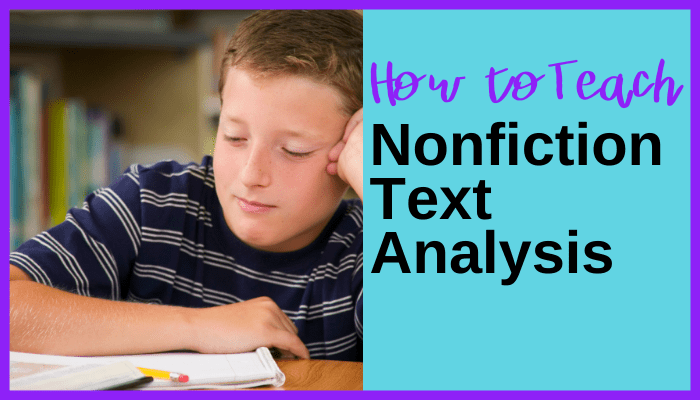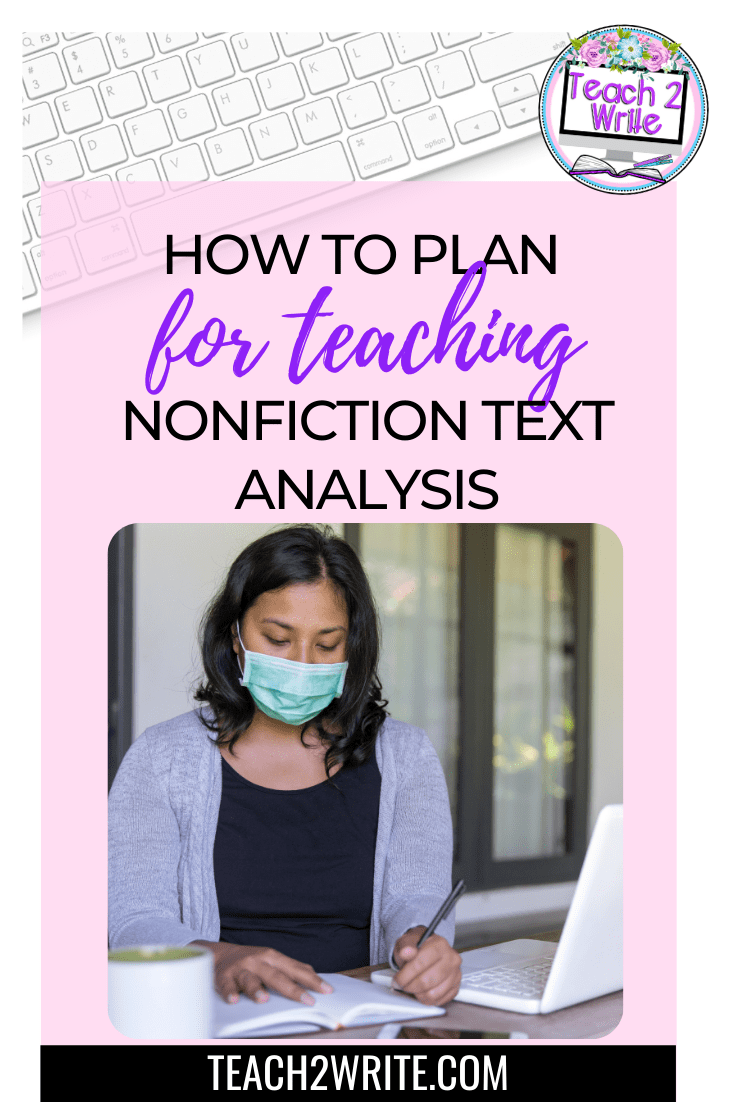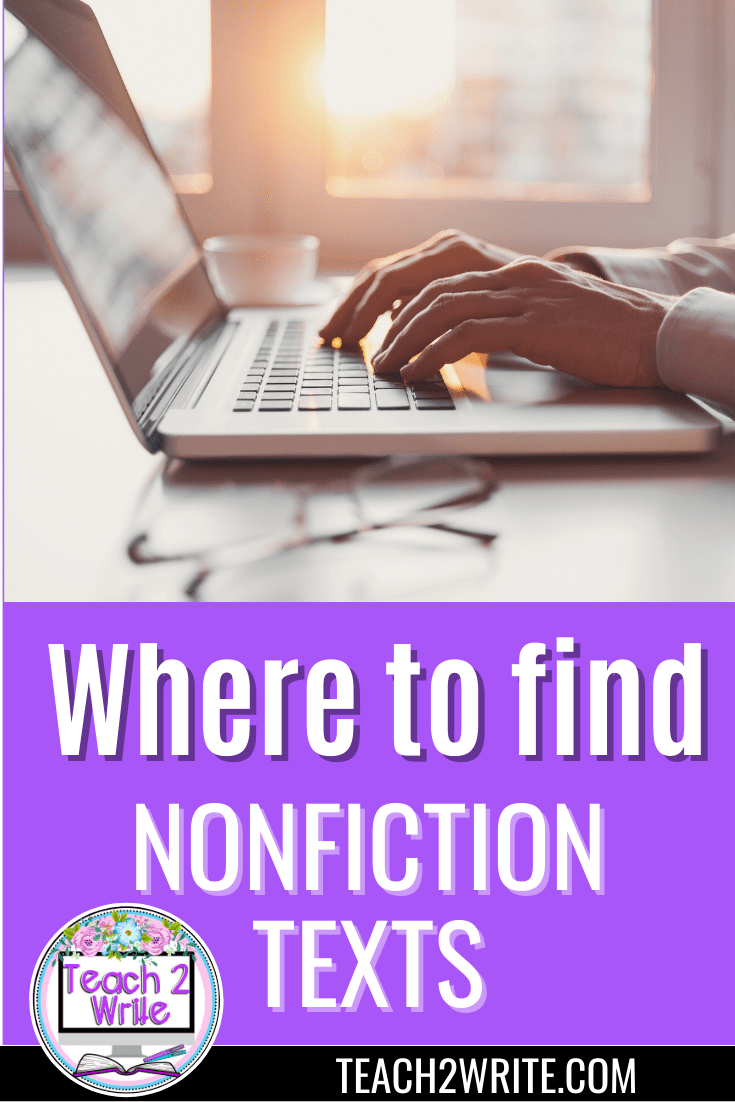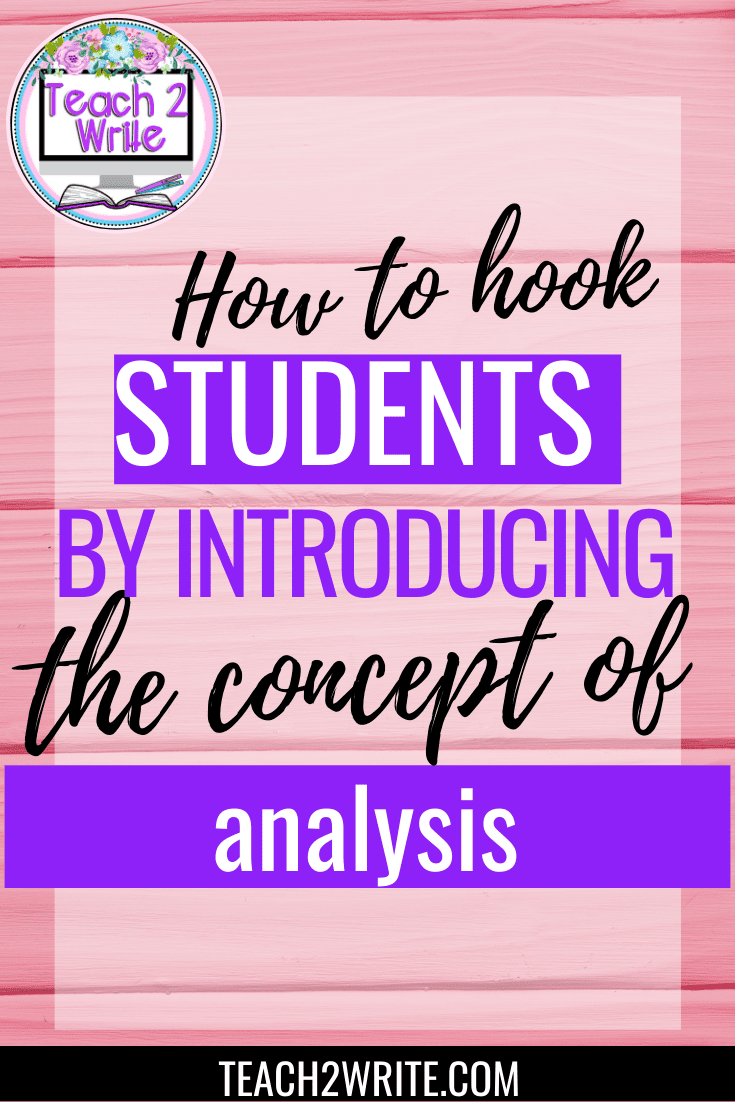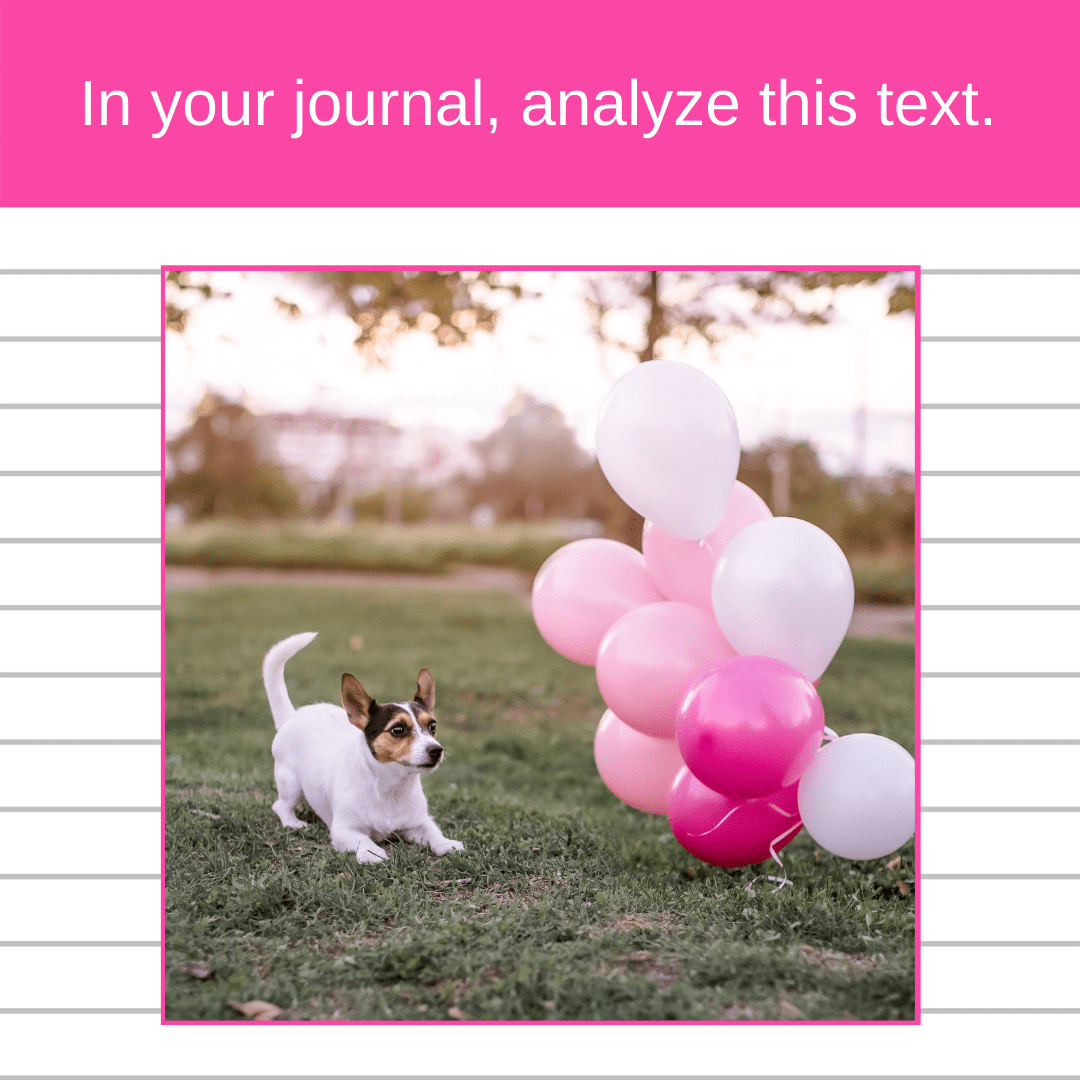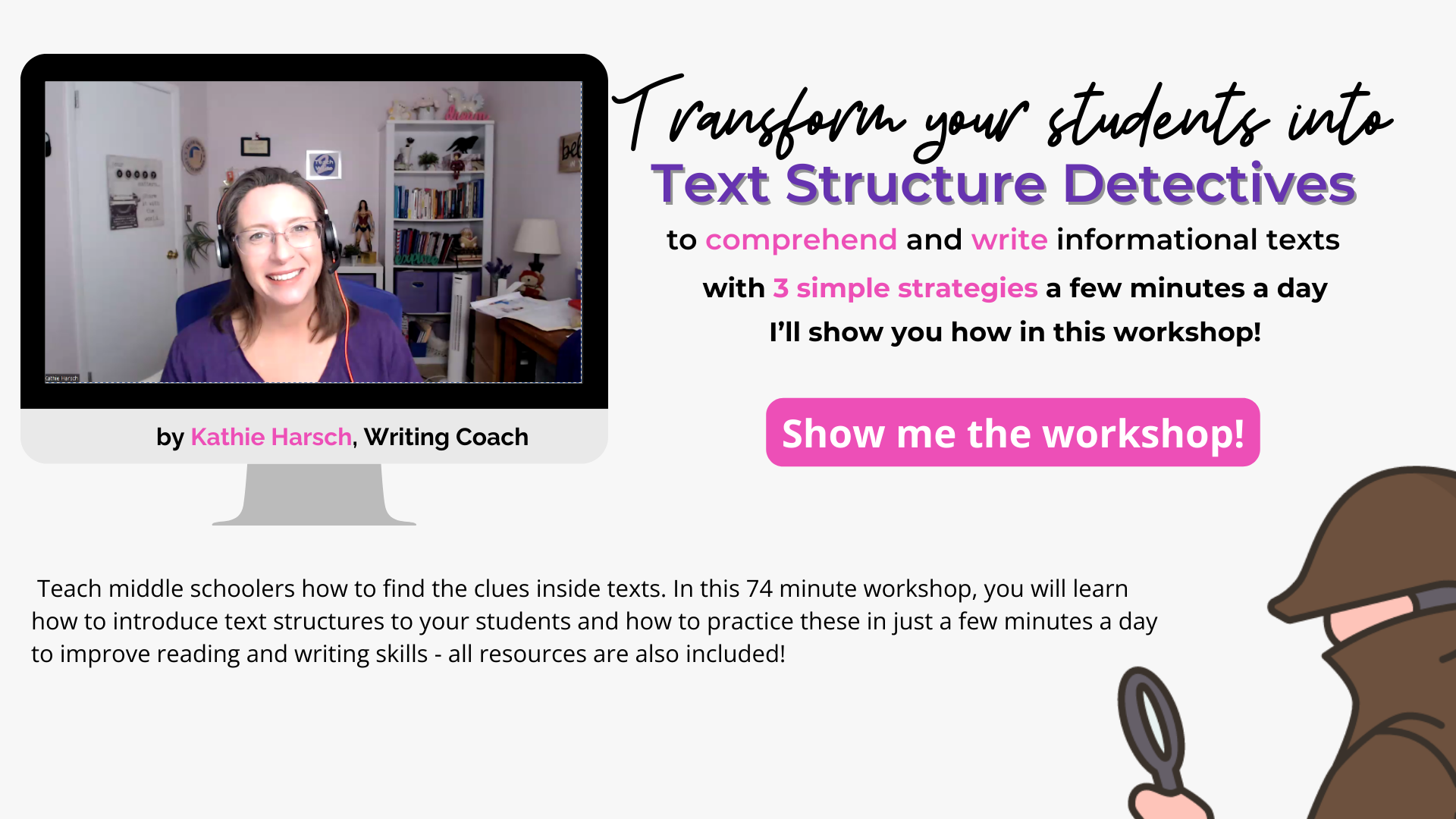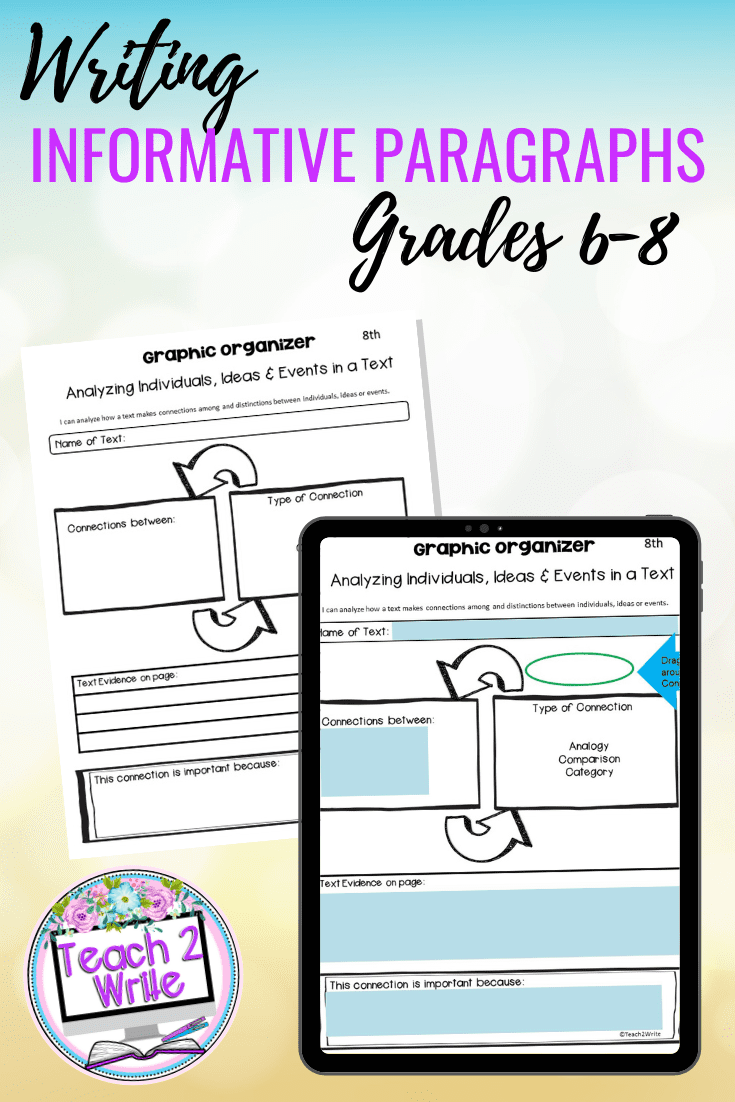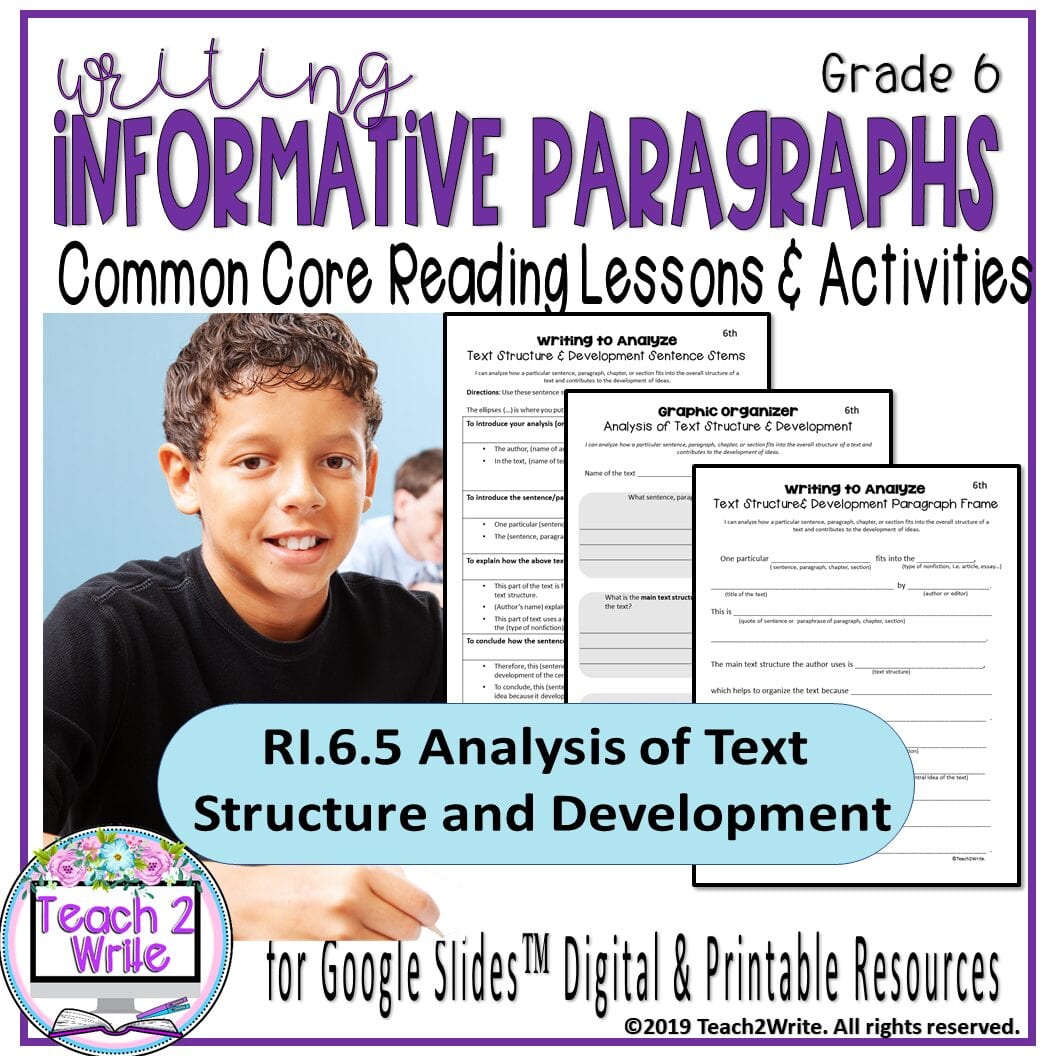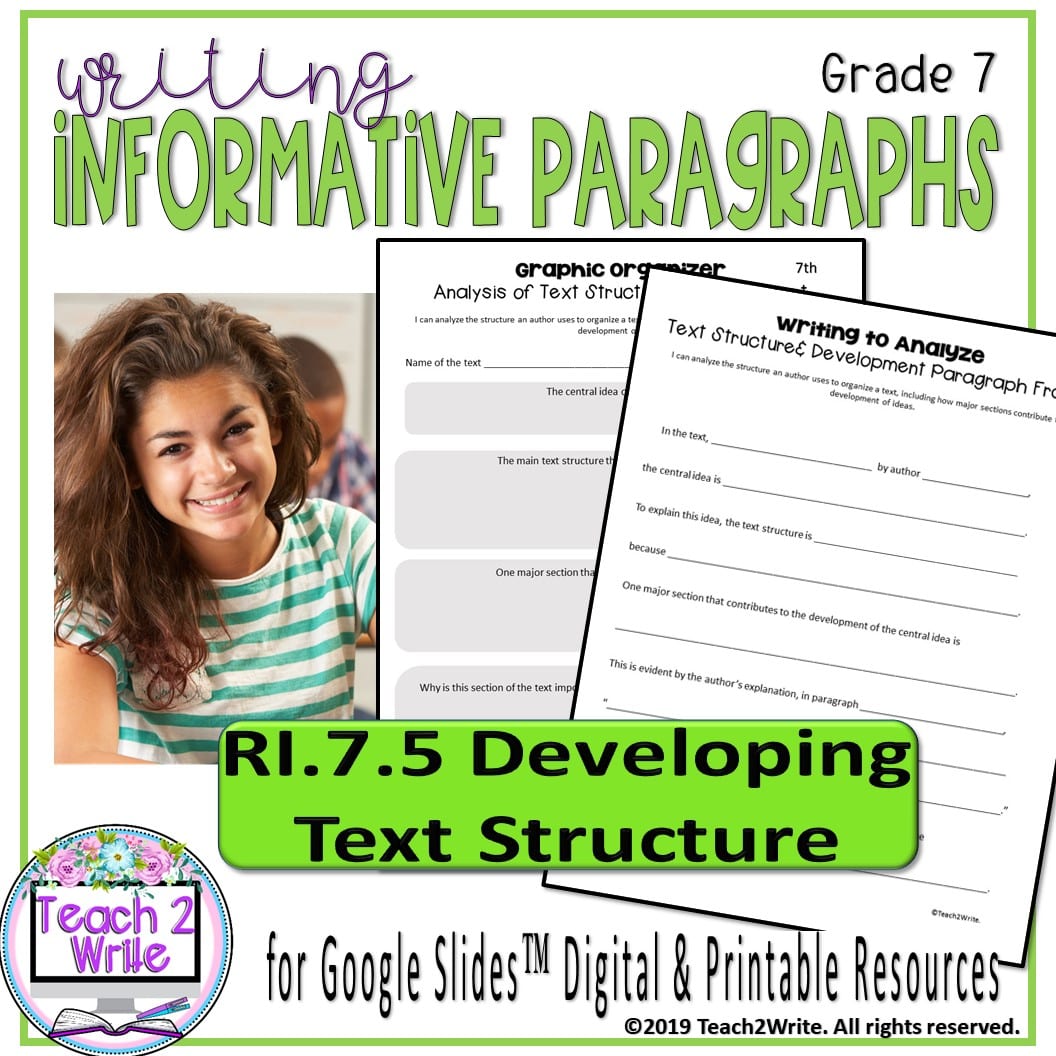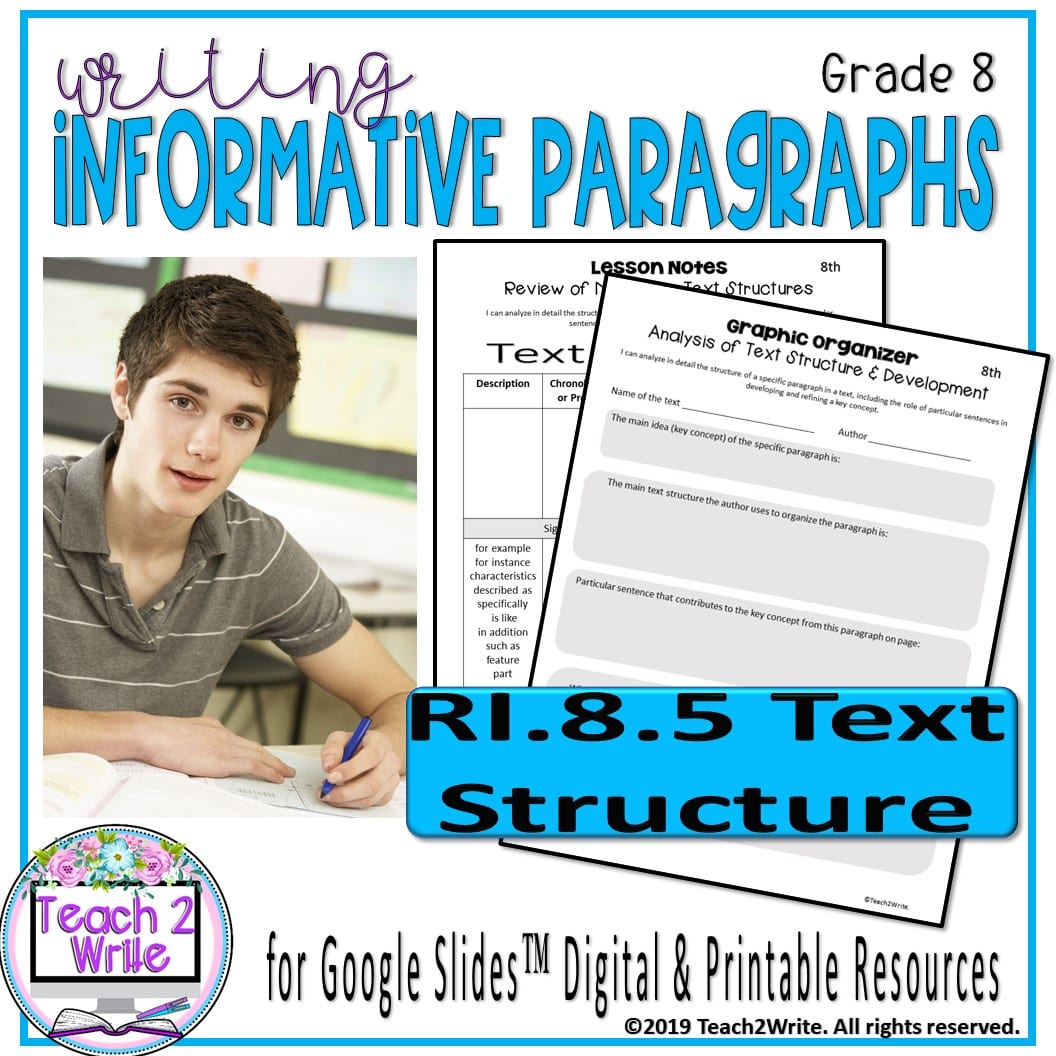How to teach nonfiction text analysis for middle school students? Let’s look at how to plan for teaching nonfiction text structures, how to find texts for students to analyze, and also, how to hook students into learning the concept of text analysis.
How to plan for teaching nonfiction text analysis
First, you want to decide what standard you want to focus on each week. Although you have 36 weeks in the school year, your students will most likely not be reading a nonfiction reading assignment every week. However, you want to spread out these nonfiction texts throughout the year in order to provide a rich and diverse literary experience for students. Therefore, you will need at least 10-15 texts for students to read.
Next, you want to find the texts you’re going to be using. If you know your course materials well, you can figure out which text goes best with teaching each standard.
By taking a standards-based approach, you can zero in on the skills required to accomplish each standard. You would be teaching both reading and writing standards at the same time. This saves an enormous amount of classroom time and does not require a lot of test-prepping for essays later.
Finally, you’ll want to decide which standards to start with. For example, citing text evidence or summarizing a text.
Where to find nonfiction texts to analyze
CommonLit has some great resources for pairing different types of literature together. It also has the standards covered with each reading selection. Not only that, it’s FREE!
Another great thing about CommonLit is that you can find highly engaging articles there, like the one I found about Michael Jordan, which I linked above. The article discusses how Michael Jordan attributes his greatest successes to his past failures. Also, you can choose the grade level, genre, and standards, which will automatically populate for your state. You can even import your students. There are multiple-choice questions, too.
Newsela is the second source you can go to for nonfiction texts. Now, you can use Newsela for free, and you can assign it to your students with questions or writing prompts. However, unless you get the PAID version, it will not tell you the standard an article aligns to or allow you to search by the standard. I’m not sure how much the paid version is because I’ve always used the free version. I found an article about how Fortnite dances are now everywhere in our culture. (Our middle schoolers were way ahead of that trend – it only took the rest of society two years to get on the Fortnite train!)
A third website to check out is PBS Learning Media, here is the link for Florida. So, you will need to type in your own state to find the correct one for your area. There are tons of videos and teacher support materials on their website. First, you can search by subject. Then, you can search by grade level and standards. There are blog posts you can read to help you discuss different texts in your classroom. Additionally, you can even create classes and assignments right within the website.
How to hook students by introducing the concept of analysis
Thinking about Fortnite made me realize that this is exactly how I hook my students into what we’re learning in class – pop culture. I also use a writer’s workshop approach in my classroom, even when my students are reading.
On one fine day before 1st period, I got a call from my administrator who told me she would be observing me that day. Luckily, I already had a concept lesson about analysis planned. To clarify, I wanted to teach students what analysis is and why it is necessary for their writing. Subsequently, the analysis lesson was a great success, and my administrator loved it. So, what did I do?
First, my bellringer was for students to analyze this image. (I have to remind students that images are a type of text).
During the mini-lesson, I introduced the concept of analysis. We discussed how students use analysis every single day. For example, when a new song by Post Malone or Taylor Swift drops, students talk about the chorus, video, beat, and maybe even the melody. After that, I explain that their discussions around what they liked or didn’t like about a new song are an example of analysis.
Students write the word “analysis” in their notebooks and define it with examples. We use the image above as an example and analyze it even more. What is the central idea? What is the tone? How does the photographer want us to feel?
Once I’ve piqued student interest, I’m ready to move on to teaching them about analyzing literature, using the nonfiction texts and my standards as a guide.
Introducing Students to Various Text Structures
Once students understand what analysis is, you can show them different ways to analyze a text by looking at the structures of texts. First, you introduce the various text structures through some engaging activities, then you implement 3 strategies that I teach in my new text structures detective workshop in just a few minutes a day through bell ringer activities. To find out more about this, click on the image below:
How to teach nonfiction text analysis made easy
For each text, I focus on one to two standards each week. I teach the vocabulary of the standard, the rubric (how students know they understand that standard), graphic organizers that help them to organize their ideas and to take notes from the texts.
Then, we discuss the organizers and begin writing paragraphs using paragraph frames or sentence stems.
To get you started, here are some resources you can use to teach nonfiction text analysis:

